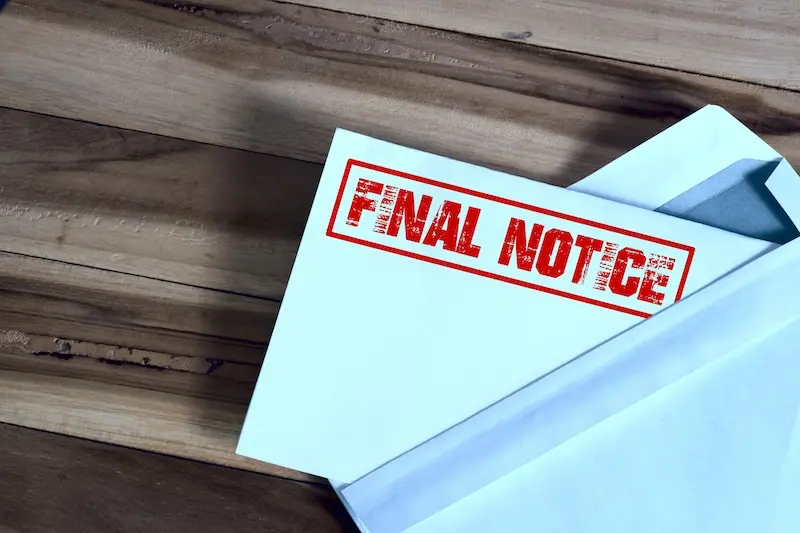For anyone struggling with debt and looking for a practical way forward, the first question they’ll often ask themselves is “How does insolvency work in Ireland?”
In simple terms, insolvency is a formal legal process designed to help people who cannot meet their debt repayments to restructure or, in some cases, write off what they owe. Under Irish law, there are several distinct solutions, each tailored to different financial circumstances, including the Personal Insolvency Arrangement (PIA), Debt Settlement Arrangement (DSA), Debt Relief Notice (DRN), and bankruptcy.
This guide explains how these processes work, what debts can be written off, and what the implications are for your home, your credit rating, and your future financial stability.
What is a Personal Insolvency Arrangement?
A Personal Insolvency Arrangement (PIA) is a formal agreement designed for people who have a mix of secured debts (like a mortgage) and unsecured debts (such as credit cards or overdrafts).
- It is arranged through a Personal Insolvency Practitioner (PIP), who negotiates with creditors on your behalf.
- A PIA can last up to six years (extendable to seven in exceptional cases).
- In many cases, you can remain in your home while restructuring your debts.
- At the end of the arrangement, any remaining qualifying unsecured debts are written off.
For homeowners, especially, a PIA offers a realistic way to tackle unmanageable debts while reducing the risk of repossession.
What is a Debt Settlement Arrangement?
As mentioned in the previous point, unsecured loans are debts that are not secured by an asset such as a property, which leads us to DSAs. A Debt Settlement Arrangement (DSA) applies only to unsecured debts, such as:
- Credit cards
- Bank loans
- Overdrafts
- Utility arrears
Just like a PIA, a DSA must be arranged through a personal insolvency practitioner.
- It generally lasts up to five years (extendable to six).
- During this time, creditors cannot pursue you for repayment outside the agreed plan.
- If you meet the terms, the remainder of your unsecured debt is written off at the end.
For those who have high levels of unsecured borrowing but do not have a mortgage, a DSA stands out as the most suitable insolvency solution.

What is a Debt Relief Notice?
Have some relatively small debts but limited means or resources to pay them back? Then a Debt Relief Notice (DRN) may be the best route for you to wipe the slate clean and start again.
- It is available to people who owe €35,000 or less in unsecured debt.
- To qualify, you must have a low income and few assets.
- A DRN is supervised for three years, during which creditors cannot pursue you.
- At the end of the period, the listed debts are written off.
This option offers a genuine fresh start for people on modest incomes, such as those dependent on social welfare, with no realistic ability to repay.
How does insolvency work in Ireland?
Insolvency in Ireland is governed by the Personal Insolvency Act 2012, which has been revised numerous times, most recently in 2021. However, there has been mounting pressure to urge the government to revise it once again to protect people with crippling mortgage interest rates from vulture funds.
Insolvency in Ireland is governed by the Personal Insolvency Act 2012 (last updated in 2021). The process typically follows these steps:
- Financial assessment – with the help of MABS or a PIP, you complete a Prescribed Financial Statement outlining income, debts, and assets.
- Protective certificate – this legally prevents creditors from taking action while a solution is being finalised.
- Proposal of an arrangement – your PIP creates a repayment plan based on what you can afford.
- Creditors’ meeting and vote – creditors must approve the proposal by a statutory majority.
- Court approval – once confirmed, the arrangement becomes binding on all included creditors.
- Supervision period – you make agreed repayments for the duration of the arrangement.
- Debt write-off – at the end, the remaining eligible debt is legally written off.
While the legislation continues to evolve, these steps remain the core path for individuals seeking to restructure their debts and regain control.
What debts can be written off in Ireland?
Depending on the chosen solution, you may be able to write off:
- Credit card balances
- Personal loans
- Overdrafts
- Utility arrears
- Business loans
- Personal guarantees
Certain debts may only be included with creditor permission, such as tax arrears, rates, or local authority charges.
However, there are a select few debts that simply cannot be written off. Here are some examples:
- Court fines
- Family maintenance ordered by the Court
- Debts arising from fraud
- Liabilities from personal injury awards
How does insolvency work in Ireland compared to bankruptcy?
There is a common misconception that insolvency is the same as bankruptcy. However, there are stark differences between the two. While insolvency solutions such as the aforementioned PIA, DSA and DRN aim to restructure debt, bankruptcy is often considered a last resort.
Here are the key points that you need to know about bankruptcy:
- Bankruptcy is declared through the High Court.
- It usually lasts one year, though income contributions may continue for up to three years.
- The Official Assignee, who is an independent officer of the court, takes control of your property and assets and distributes them to creditors. From this point on, you will no longer have to deal with your creditors.
- The family home may be sold unless an arrangement is made to protect it.
Bankruptcy offers a quicker route to having your debts written off, but it is by no means the easiest option. This route comes with more severe consequences for assets and credit history. So, while you might be debt-free sooner rather than later, there are greater long-term implications with bankruptcy.

The difference between DRN and DSA – A quick recap
The Debt Relief Notice (DRN) and Debt Settlement Arrangement (DSA) are both insolvency solutions, but essentially, they serve different groups:
- DRN – for low-income individuals with debts under €35,000 and minimal assets.
- DSA – for people with higher levels of unsecured debt, with no maximum debt cap.
How long does insolvency take?
The reality is that people with financial woes often end up struggling silently for some time, be it due to the stigma attached to debt or a sense of pride in not asking for help. So, for those who have bravely sought assistance, a major concern will be how long the process will take.
These timelines for each process give you an idea of what to expect:
- DRN – usually three years.
- DSA – up to five years (extendable to six).
- PIA – up to six years (extendable to seven).
- Bankruptcy – typically one year, but restrictions may continue for longer.
Obviously, if you have a wide range of complex loans, it will take longer to consolidate them and negotiate with the relevant lenders than if you simply have one straightforward lump sum loan.
Will insolvency ruin my credit forever?
Insolvency offers the chance to start again, free from debt. But when you’re in the eye of a financial thunderstorm, it’s difficult to imagine the future. A question that arises again and again is the effect that insolvency has on a person’s credit rating.
The short answer is that yes, an insolvency solution will affect your credit rating while the arrangement is in place and for some years afterwards. However, there is more than a glimmer of hope; your credit rating will not be tarnished forever. Everyone deserves a chance to start over, and in fact, many people go on to rebuild their financial standing once debts are cleared.
Over time, with careful financial management, it is possible to access credit again, be it applying for a mortgage or a car loan.
Can I keep my house if I go insolvent?
Home is where the heart is – and nobody wants to be faced with losing the family home. One of the key aims of a Personal Insolvency Arrangement (PIA) is to help people to remain in their home wherever possible. Each case depends on affordability and creditor agreement, but the law is structured to protect the family home once a realistic repayment plan can be made. So yes, it is possible to keep your house if you have chosen an insolvency option.
However, in bankruptcy, the outcome depends on the equity in the property and whether arrangements can be made with the Official Assignee.

How can I find a Personal Insolvency Practitioner near me?
If you are considering insolvency, you must work with a Personal Insolvency Practitioner (PIP). As professionals, PIPs are licensed by the Insolvency Service of Ireland and act as mediators between you and your creditors.
At Alan McGee & Co., we’ve helped people all over the country find a path towards financial freedom. Unlike larger firms, you will not be passed to a remote call centre; you will speak directly with an experienced solicitor (and PIP) who understands the system and your situation, no matter what county you may be living in.
How does insolvency work in Ireland? Alan McGee & Co. has all the answers you need
If you’re overwhelmed by debt and need assistance, you don’t have to weather the storm on your own. There’s always a way forward, and we’ll help you find it, so that you regain control of your finances. Whether through a PIA, DSA, DRN, or as a last resort, bankruptcy, there are solutions available to help you rebuild your financial future from the ground up.
With over 600 successful Personal Insolvency Arrangements and thousands of resolved legal cases under our belt, our team offers practical, professional, compassionate support and no judgment. You have the chance to talk to a qualified solicitor and Personal Insolvency Practitioner who can assess your situation, explain your options, and guide you every step of the way.
It’s not the end; it’s a fresh start. Contact us today for a confidential consultation.

